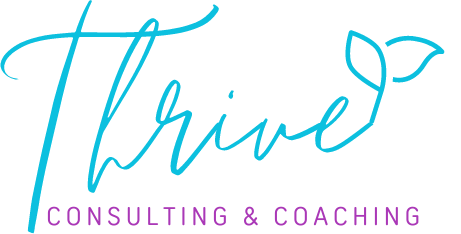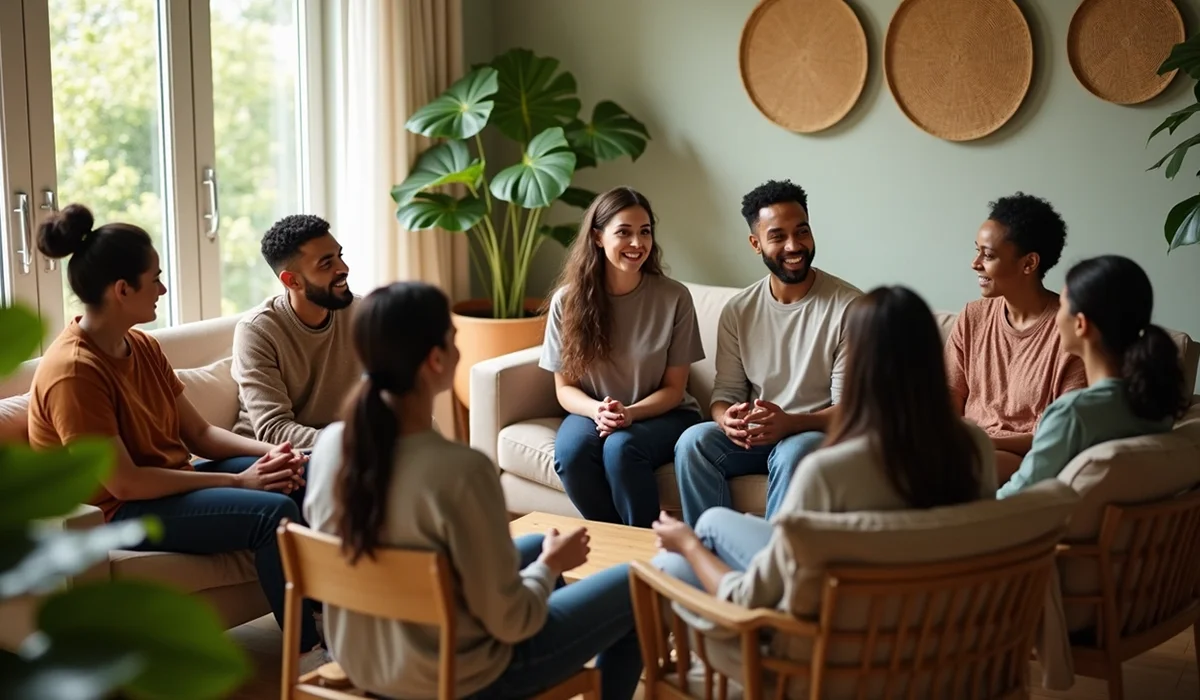Research shows that couples with good communication have happier relationships that last longer. The difference between just hearing your partner and really listening makes a big impact. Active listening has become a vital skill to build stronger relationships.
The Journal of Sex Research points to something interesting. Couples who feel good about how they communicate are more satisfied with their relationship overall. Active listening creates a safe space. Partners feel at ease sharing their thoughts and feelings. This builds trust and brings them closer together.
Learning to listen well isn’t always simple. Your partner might say something that feels like criticism. This can make you defensive and tension can build up fast. If you find yourself getting distracted by your phone or cutting your partner off mid-sentence, don’t worry. These challenges can actually help you connect on a deeper level.
This piece offers practical ways to build better listening skills with your partner. Let’s find out how to turn those tough moments into meaningful talks that make your relationship stronger.
Understanding the Foundations of Active Listening
Active listening is the life-blood of meaningful communication between partners. This skill needs conscious effort to connect with your partner’s words, emotions, and non-verbal cues. Simple conversations won’t cut it.
The real meaning of ‘active’ listening
Active listening means more than just hearing sounds. You must focus completely on your partner’s words and understand the meaning behind them [1]. This skill makes you a mindful participant in every conversation.
Real active listening requires partners to:
- Stay present without planning responses
- Show they care through eye contact and body language
- Pick up on non-verbal signals
- Ask questions that lead to deeper sharing
- Reflect back what they heard
Hearing vs listening – they’re not the same
Most couples think hearing and listening mean the same thing, but they serve different purposes in communication [2]. Hearing happens automatically – our ears just pick up sounds. Listening takes focus and careful processing of information [3].
Listening needs empathy and curiosity, while hearing lacks emotional connection [2]. Good conversations with your partner combine mind and body to grasp the complete message.
Building trust through active listening
Active listening helps build trust and creates deeper emotional bonds between partners [4]. When couples listen mindfully, they create a safe space where both feel valued and understood.
This deeper understanding brings several benefits:
- Fewer misunderstandings through clearer communication
- Closer emotional bonds as partners feel heard
- Stronger relationships built on mutual respect
- Better ways to resolve conflicts by sharing views
Active listening helps partners find solutions that work for both [5]. When couples try to understand each other without judgment, small issues don’t become big problems.
The practice also creates deeper emotional connections because both partners feel heard and accepted [4]. This happens naturally when the listener shows real interest through their words and actions.
Couples who practice active listening regularly develop stronger ways to communicate. They move beyond basic exchanges to create meaningful conversations that strengthen their bond and understanding.
Mastering the Basic Techniques of Active Listening
Becoming skilled at active listening takes dedication and practice. These fundamental techniques are the foundations of listening effectively in relationships.
Maintaining eye contact and body language
The “7-38-55 Rule of Personal Communication” shows that body language makes up 55% of personal communication, which makes it vital for active listening [6]. Your genuine interest shows when you maintain eye contact for 50-70% of the conversation. Hold contact for 4-5 seconds before looking away briefly [7].
Your body language reveals your attention level. Face your partner directly and lean slightly forward to show interest [8]. Keep your posture open by:
- Uncrossing your arms and legs
- Placing feet flat on the floor
- Using open palm gestures
- Removing physical barriers between you and your partner
Paraphrasing what your partner says
Paraphrasing helps confirm understanding and shows you’re listening carefully. Rather than repeating exact words, express your partner’s message differently [9]. To name just one example, when your partner feels overwhelmed at work, you might say, “It sounds like your workplace responsibilities are causing you stress” [4].
Asking clarifying questions
Good clarifying questions show your genuine interest in your partner’s view and improve understanding. These questions help you:
- Fill information gaps
- Get more specific details
- Keep conversations flowing
- Build better listening skills [10]
Start questions with “Can you tell me more about…” or “What did you think about…” to explore topics deeply [7]. Note that asking questions shows your desire to learn and understand, not judge or solve problems immediately [10].
Avoiding interruptions
Interruptions can damage communication and trust between partners [11]. You can prevent this by:
Turn off your phone and television to eliminate distractions [9]. Let your partner finish their thoughts without jumping in [7]. Make mental notes if you worry about forgetting your point instead of interrupting [11].
A pause in speaking might just mean your partner needs time to think. Wait a moment after they stop talking to make sure they’ve finished their thought [11]. This shows respect and leads to more meaningful conversations.
Note that good listening involves more than just observing quietly – it creates conversations that increase and energize thinking [10]. These techniques build stronger foundations for open, honest communication in your relationship when practiced regularly.
Developing Advanced Communication Skills for Couples
Simple listening techniques alone won’t suffice. Couples must develop advanced communication skills that deepen their emotional connection. These skills help them direct complex conversations and build stronger bonds through understanding and empathy.
Recognizing emotional undertones
Emotional undertones reveal deeper feelings beneath spoken words [12]. Your partner’s tone of voice, body language, and emotional state carry subtle cues that need attention. Research shows that people who excel at recognizing emotions communicate better with their partners [13].
You can identify emotional undertones by:
- Noticing vocal tone and pace changes
- Observing facial expressions and gestures
- Tracking emotional energy shifts
- Understanding the conversation’s context
Proving your partner’s viewpoint right
Trust builds when you understand and accept your partner’s feelings, even in disagreement [14]. This approach creates a supportive environment where both partners feel heard.
The right validation includes these vital elements:
- Accepting your partner’s emotions without judgment
- Showing empathy through descriptive language
- Asking questions to ensure understanding
- Relating to their feelings based on their experiences
“I understand why you felt neglected when I was late” works better than “You shouldn’t feel that way” [14]. Couples experience greater relationship satisfaction and reduced stress levels through validation [14].
Managing your internal reactions
Relationship experts say people have just ten seconds to control their defensive reactions when they hear something disagreeable [15]. Managing internal responses becomes vital to keep conversations productive.
Your emotional responses need regulation through these steps:
Start by identifying your emotional triggers and biases. Practice staying calm through mindful breathing and focused attention. Note that understanding your partner’s viewpoint doesn’t mean you must agree with it [16].
Couples who manage their internal reactions well have more satisfying relationships [13]. This skill helps partners maintain their emotional connection during challenging conversations.
These advanced communication skills need patience and dedication to develop. Couples create a stronger foundation for resolving conflicts as they build these abilities together. The goal isn’t winning arguments but promoting understanding and connection through thoughtful, empathetic communication.
Overcoming Common Barriers to Listening in Relationships
Strong relationships can face obstacles that get in the way of listening well. Couples can create better conversations by spotting and fixing these common roadblocks.
Digital distractions and how to minimize them
Our connected world makes digital devices a big challenge to active listening. Studies show that about two-thirds of people lose focus when using digital devices [1], and 54% say others’ device use distracts them [1]. Students get around 273 notifications each day [1], which shows how often interruptions can pop up.
To cut down on digital distractions:
- Set up device-free zones during talks
- Turn off notifications on all devices
- Put phones away so they don’t catch your eye
- Pick specific times to check messages and emails
A phone’s presence alone can make you expect interruptions, which stops you from connecting deeply [5]. Putting devices away lets both partners stay focused on the conversation and keep better eye contact.
Defensive reactions and how to calm them
People often get defensive because of fears and insecurities. This defense mechanism protects against what feels like criticism [17]. These reactions can make conflicts worse through emotional responses and counterattacks, which block understanding and problem-solving [18].
You can handle defensive reactions better by:
- Taking your share of responsibility
- Sticking to specific facts without generalizing
- Sharing feelings with “I” statements
- Using self-soothing techniques when feeling attacked
Research shows you have about ten seconds to control defensive reactions when you hear something you don’t like [5]. Learning to manage these quick responses is vital to keep conversations productive.
Fatigue and timing issues
Being tired physically and mentally can affect your listening by a lot. Research shows that processing speech for long periods makes people tired, which hurts communication quality [19]. This fatigue shows up as:
- Problems processing information
- Less emotional availability
- Shorter attention span
- Hard time staying focused
Good timing makes communication work better. Trying to have big talks when you or your partner feel exhausted or distracted leads to misunderstandings and tension [20]. Here’s how to handle fatigue and timing:
Pick the best times for important talks when both partners feel alert and ready. Learn to spot signs of tiredness in yourself and your partner, like shorter attention spans or irritability. Be ready to pause conversations when energy runs low.
Couples who pay attention to these common barriers can build an environment that promotes active listening and deeper connections. Using specific strategies to handle digital distractions, defensive reactions, and tiredness helps partners have better, more meaningful conversations.
Practicing Active Listening Exercises Together
Simple exercises can make couples better listeners and help them connect on a deeper level. These techniques work because they create habits that lead to meaningful conversations.
The mirroring exercise
Mirroring helps partners understand each other better through structured dialog. This exercise has three parts that work together to improve how couples communicate [21].
The exercise starts with reflection and listening. One partner asks “Will you mirror me?” Once the other agrees, they share their feelings using “I” statements. The listener then repeats exactly what they heard and asks “Did I get that correct?” This back-and-forth continues until the speaker feels completely understood [21].
The next part builds empathy through validation. The listener shows they understand their partner’s viewpoint with phrases like “That makes sense because…” This step helps the speaker feel heard, whatever the listener’s opinion might be [21].
The no-interruption conversation
This timed practice teaches couples to listen without jumping in. A timer runs for 3-5 minutes while one partner talks about anything they want [2]. The listener shows they’re paying attention through nodding and eye contact but stays quiet [3].
The exercise works best when you:
- Put away all phones and devices
- Show you’re listening through body language
- Hold back from responding right away
- Listen to understand, not to reply
When time’s up, the listener sums up what they heard. Then partners swap roles so both get to practice being better listeners [3].
Weekly listening check-ins
Regular catch-ups give couples time to talk openly and practice listening. These conversations keep partners emotionally close and help solve small issues before they grow [22].
Your weekly check-ins will work better if you:
Pick a time that fits both schedules – maybe during dinner or a weekend afternoon [23]. Find a quiet spot and put your phones away to avoid distractions [23]. Make time to talk about your day and any relationship thoughts [23].
These regular check-ins are great because they:
- Build personal connections [22]
- Let you share wins and challenges [22]
- Give quick feedback and support [22]
- Help catch problems early [22]
Regular practice of these exercises builds stronger listening skills and deeper connections between partners. Mirroring builds understanding, no-interruption talks teach patience, and weekly check-ins keep communication flowing. These techniques are the foundations of better listening in relationships.
Conclusion
Active listening is the life-blood skill that reshapes the scene from surface-level interactions to deep, meaningful connections. Couples build stronger foundations when they practice simple techniques like eye contact and ask clarifying questions.
You need dedication to become skilled at advanced techniques like spotting emotional undertones and managing internal reactions. These efforts bring most important rewards. Couples who commit to active listening experience greater satisfaction in their relationships. They form deeper emotional bonds and resolve conflicts better.
Digital distractions or defensive reactions should not derail meaningful conversations. Couples can develop lasting listening habits through simple exercises like mirroring, no-interruption talks, and weekly check-ins. Each small step toward better listening creates positive changes that deepen their commitment over time.
Begin your trip toward better communication by picking one technique from this piece and practicing it with your partner. Small, consistent efforts will help you build the deep, connected relationship you both deserve.
References
[1] – https://www.edweek.org/leadership/digital-distractions-in-class-linked-to-lower-academic-performance/2023/12
[2] – https://www.talkspace.com/blog/communication-exercises-for-couples-therapy/
[3] – https://drsamanthamorel.com/post/couplescommunication/
[4] – https://www.mvspsychology.com.au/active-listening-for-couples-therapy-for-stronger-bonds/
[5] – https://www.isemag.com/professional-development-leadership/article/14268186/break-through-digital-distractions-to-make-a-real-connection
[6] – https://today.duke.edu/2019/06/how-practice-active-listening
[7] – https://www.verywellmind.com/what-is-active-listening-3024343
[8] – https://www.globallisteningcentre.org/body-language-of-listeners/
[9] – https://www.accesstherapy.ca/speaking-with-my-therapist-blog/active-listening-and-paraphrasing
[10] – https://www.psychologytoday.com/us/blog/the-adaptive-mind/202303/clarifying-questions-will-help-you-be-a-better-listener
[11] – https://kevineikenberry.com/communication-interpersonal-skills/how-to-stop-interrupting-remarkable-tv/
[12] – https://yaktack.com/words/identifying emotional undertones
[13] – https://pmc.ncbi.nlm.nih.gov/articles/PMC9862275/
[14] – https://www.hprc-online.org/social-fitness/relationship-building/validation-show-youre-listening-even-if-you-disagree
[15] – https://www.estherperel.com/blog/six-essential-practices-to-improve-listening-skills-in-relationships
[16] – https://attuneconnect.com/how-to-validate-your-partners-feelings-without-losing-your-own-voice/
[17] – https://www.mindbodygreen.com/articles/what-to-do-if-your-partner-always-gets-defensive-and-what-causes-defensiveness?srsltid=AfmBOorYPanEHpy5oBiZg47voancIlMZuPmdCIV-QfW2zyDb3qGWJPHI
[18] – https://upliftcounselingandmediation.com/overcoming-defensiveness-in-relationships-effective-strategies-and-solutions-for-couples
[19] – https://pmc.ncbi.nlm.nih.gov/articles/PMC5603232/
[20] – https://ascensioncounseling.com/the-art-of-equilibrium-balancing-talking-and-listening-in-your-relationship
[21] – https://www.justinyaros.com/mirroring-effective-couples-communication/
[22] – https://www.peoplebeam.co/blog/how-to-structure-team-weekly-check-ins
[23] – https://www.paired.com/articles/communication-exercises-for-couples



